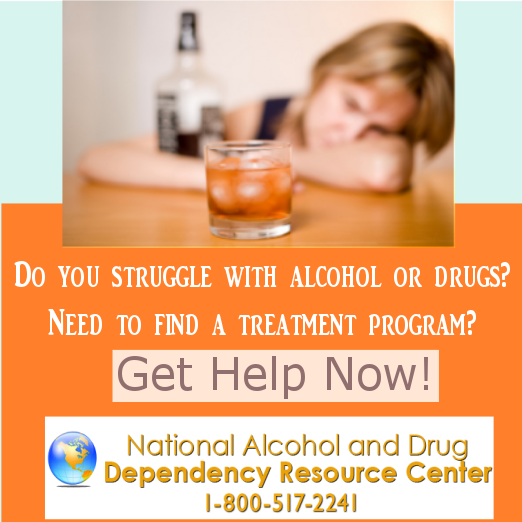MUSIC INDUSTRY ADDRESS DRUG, ALCOHOL PROBLEMS
The drug-related deaths of popular entertainers like Whitney Houston have focused attention on drug and alcohol abuse, both inside and outside the entertainment industry. Celebrities may be at special risk, but some in the industry say they are addressing the problem.
The shocking stories are familiar - lives cut short by alcohol and drug abuse. Cocaine contributed to Whitney Houston's death. She drowned in her bathtub in a Beverly Hills hotel earlier this year. Michael Jackson died not far from there in 2009 after his doctor administered a lethal dose of the sedative Propofol. British singer Amy Winehouse was troubled by addiction and died last year of alcohol poisoning.
Experts say alcohol and drug abuse is a problem in the general population. But entertainers are especially vulnerable because of the long hours on the road and the intense demands of performing.
“There's a lot of down time, a lot of traveling, a lot of boredom, a lot of sitting, a lot of doing nothing," said Bob Forrest.
Bob Forrest is a musician, a recovering addict and a drug counselor.
"And so you tend to - at least I did, and most of my friends - tend to, at the very least, drink excessively," he said.
Drug and alcohol abuse is a special risk for those who find fame and fortune as performers, says Neil Portnow. He is president of MusiCares, an industry charity, and The Recording Academy, which presents the Grammy Awards.
“And the way that it plays out sometimes is over a long period of time, where somebody can develop the thick skin to deal with the issues that come with fame and fortune," said Portnow. "And then sometimes it's pretty quick and sometimes it's pretty young. And so those folks are not always well equipped to deal with that.”
He says some people around the artist can be enablers and others may turn a blind eye to the addiction.
Psychiatrist Charles Sophy treats celebrities. He says many are in denial.
“[They say] No, it's not me, or I don't use that much, but my doctor gives it to me," said Sophy. "All of those denial places are going to be impediments and hold you up from connecting to treatment to get a better outcome."
Sophy says successful artists are creative and driven, and some have underlying emotional problems that fuel addiction and need treatment.
“For instance, is there an anxiety disorder? Is there a mood disorder? Is there an attentional disorder, something that drove their creativity to become successful and where they're at, but also will become an impediment for them," he said.
Some young musicians think drug use is part of being creative, says Billy Morrison, a guitarist who stopped using drugs.
“The availability and the so-called 'cool' factor - which is disappearing - play a bigger part in the entertainment business than other professions," said Morrison.
He says the industry is less tolerant of drug use now than a few years ago. Harold Owens, senior director of the Musicians Assistance Program of MusiCares, says the industry is dealing with it.
“We get a lot of calls from managers," said Owens. "Managers, agents, they're concerned about their artist. One more time, their artist has relapsed and they need some guidance.”
He says MusicCares helps addicted entertainers get into good treatment programs.
Those who work with celebrities say the key to dealing with drug abuse is early intervention, effective treatment and a support system. They say recovery can be a lifelong process.
The drug-related deaths of popular entertainers like Whitney Houston have focused attention on drug and alcohol abuse, both inside and outside the entertainment industry. Celebrities may be at special risk, but some in the industry say they are addressing the problem.
The shocking stories are familiar - lives cut short by alcohol and drug abuse. Cocaine contributed to Whitney Houston's death. She drowned in her bathtub in a Beverly Hills hotel earlier this year. Michael Jackson died not far from there in 2009 after his doctor administered a lethal dose of the sedative Propofol. British singer Amy Winehouse was troubled by addiction and died last year of alcohol poisoning.
Experts say alcohol and drug abuse is a problem in the general population. But entertainers are especially vulnerable because of the long hours on the road and the intense demands of performing.
“There's a lot of down time, a lot of traveling, a lot of boredom, a lot of sitting, a lot of doing nothing," said Bob Forrest.
Bob Forrest is a musician, a recovering addict and a drug counselor.
"And so you tend to - at least I did, and most of my friends - tend to, at the very least, drink excessively," he said.
Drug and alcohol abuse is a special risk for those who find fame and fortune as performers, says Neil Portnow. He is president of MusiCares, an industry charity, and The Recording Academy, which presents the Grammy Awards.
“And the way that it plays out sometimes is over a long period of time, where somebody can develop the thick skin to deal with the issues that come with fame and fortune," said Portnow. "And then sometimes it's pretty quick and sometimes it's pretty young. And so those folks are not always well equipped to deal with that.”
He says some people around the artist can be enablers and others may turn a blind eye to the addiction.
Psychiatrist Charles Sophy treats celebrities. He says many are in denial.
“[They say] No, it's not me, or I don't use that much, but my doctor gives it to me," said Sophy. "All of those denial places are going to be impediments and hold you up from connecting to treatment to get a better outcome."
Sophy says successful artists are creative and driven, and some have underlying emotional problems that fuel addiction and need treatment.
“For instance, is there an anxiety disorder? Is there a mood disorder? Is there an attentional disorder, something that drove their creativity to become successful and where they're at, but also will become an impediment for them," he said.
Some young musicians think drug use is part of being creative, says Billy Morrison, a guitarist who stopped using drugs.
“The availability and the so-called 'cool' factor - which is disappearing - play a bigger part in the entertainment business than other professions," said Morrison.
He says the industry is less tolerant of drug use now than a few years ago. Harold Owens, senior director of the Musicians Assistance Program of MusiCares, says the industry is dealing with it.
“We get a lot of calls from managers," said Owens. "Managers, agents, they're concerned about their artist. One more time, their artist has relapsed and they need some guidance.”
He says MusicCares helps addicted entertainers get into good treatment programs.
Those who work with celebrities say the key to dealing with drug abuse is early intervention, effective treatment and a support system. They say recovery can be a lifelong process.



